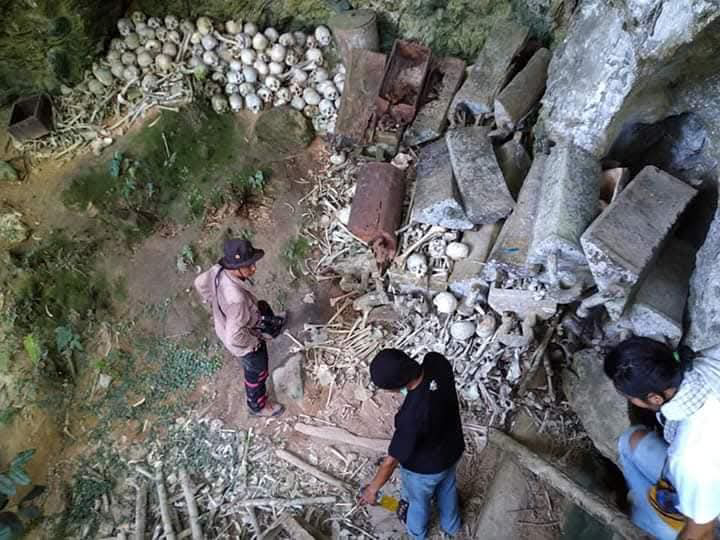By: Deddy Todongi
Discovery of thousands of human skeletons scattered inside Makilo Cave, in Boe Village, South Lore District, Poso Regency, serves as strong evidence of an ancient community and the burial traditions of the To Pamona people. This site not only holds bones, but also stories of the belief systems and way of life of the prehistoric society that once inhabited this area.
The burial tradition in Boe Cave reflects a worldview closely tied to animism and dynamism — belief systems that honor nature, ancestral spirits, and mystical forces believed to exist in all aspects of life. The arrangement of the skeletons and the artifacts found suggest that the burials were carried out in a structured manner, most likely accompanied by strong spiritual rituals.
Although there is no official certainty regarding the age or the initial use of the cave as a burial site, some researchers and local residents believe it may have been used as a mass grave for victims of the Spanish flu epidemic, which spread at the end of the 19th century into the early 20th century. This hypothesis arises from the unusual distribution patterns of the skeletons and their concentration within a specific time frame.
Furthermore, there is speculation that the cave also served as the final resting place for a group of megalith builders migrating from the Bada Valley to a new region — a spiritual and social journey whose direction and purpose remain largely undiscovered to this day.
With all its archaeological richness and cultural value, Boe Cave is not merely a silent chamber filled with bones; it is a mute witness to the changing eras, beliefs, and movements of ancient humans in Central Sulawesi. The preservation of this site is crucial, not only to safeguard ancestral heritage but also as a source of interdisciplinary knowledge: archaeology, anthropology, and local history.






Posting Komentar